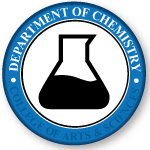Comparative Analysis of Antihistamines and Nonsteroidal Anti-inflammatory Drugs (NSAIDs): Properties, Structure and Prediction of New Potential Drugs
© 2017 Bartzatt; This is an Open Access article distributed under the terms of the Creative Commons Attribution License (http://creativecommons.org/licenses/by/4.0), which permits unrestricted use, distribution, and reproduction in any medium, provided the original work is properly cited.
DOI : 10.9734/JAMPS/2017/32695
This article was originally published here:http://www.sciencedomain.org/abstract/18401
Abstract
Aims: To determine the molecular properties of common antihistamines and non-steroidal anti-inflammatory agents (NSAIDs). To identify interrelationships among these two groups of drugs utilizing pattern recognition methods and statistical analysis.
Study Design: After determination of molecular properties, values thereof are examined using pattern recognition methods and other numerical analysis for underlying relationships and similarities.
Place and Duration of Study: Durham Science Center, University of Nebraska, Omaha, Nebraska from September 2016 to January 2017.
Methodology: Thirty compounds were identified as antihistamines and 27 compounds identified as NSAIDs. Properties such as Log P, molecular weight, polar surface area, etc. are determined. Molecular properties are compared applying methods such as K-means cluster analysis, nearest neighbor joining, box plots, and statistical analysis in order to determine trends and underlying relationships. Pattern recognition techniques allow elucidation of underlying similarities.
Results: The molecular properties of all 57 drugs are tabulated for comparison and numerical analysis. Evaluation by Kruskal-Wallis test and one-way ANOVA indicated that antihistamines and NSAIDs’ values of Log P have equal medians and equal means. However, values of polar surface area (PSA) and number of rotatable bonds for these two groups do not have equal means and medians. Box plots indicated that Log P, PSA, and molecular weight values have significant overlap in range. Neighbor-joining method showed which drugs are most similar to each other. K-means cluster analysis also divided these 57 drugs into six groups of highest similarity. Principal coordinates analysis (PCoA) with 95% ellipses indicated all but four of the drugs fall within a 95% confidence region. Multiple regression analysis generated mathematical relationship for prediction of new drugs.
Conclusion: These two groups of drugs show compelling similarities. PCoA showed all but four of 57 drugs come within a 95% confidence ellipsis. Neighbor joining and K-means cluster analysis showed drugs having similarities between the two groups.

